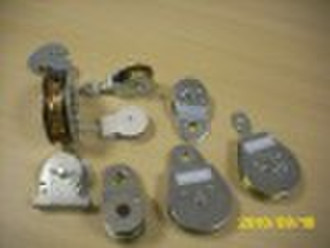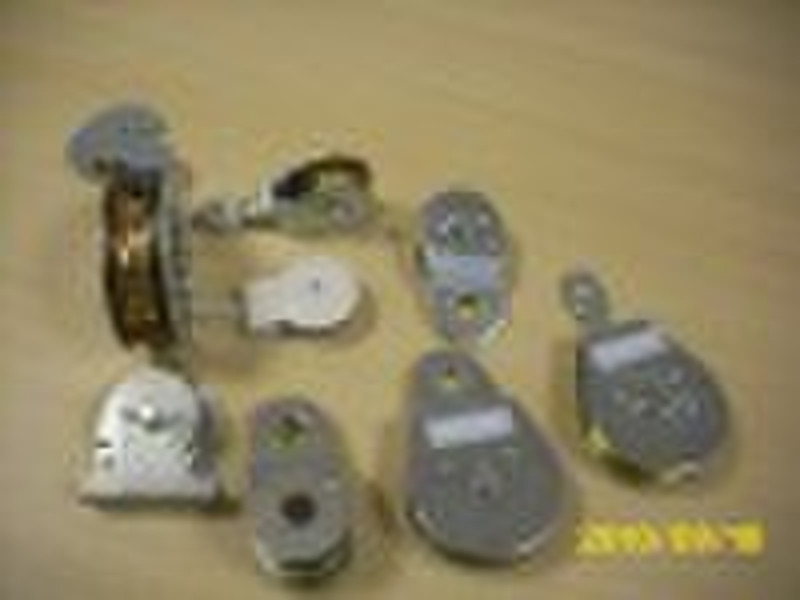Catalog
-
Catalog
- Agriculture
- Apparel
- Automobiles & Motorcycles
- Beauty & Personal Care
- Business Services
- Chemicals
- Construction & Real Estate
- Consumer Electronics
- Electrical Equipment & Supplies
- Electronic Components & Supplies
- Energy
- Environment
- Excess Inventory
- Fashion Accessories
- Food & Beverage
- Furniture
- Gifts & Crafts
- Hardware
- Health & Medical
- Home & Garden
- Home Appliances
- Lights & Lighting
- Luggage, Bags & Cases
- Machinery, Hardware & Tools
- Measurement & Analysis Instruments
- Mechanical Parts & Fabrication Services
- Minerals & Metallurgy
- Office & School Supplies
- Packaging & Printing
- Rubber & Plastics
- Security & Protection
- Service Equipment
- Shoes & Accessories
- Sports & Entertainment
- Telecommunications
- Textiles & Leather Products
- Timepieces, Jewelry, Eyewear
- Tools
- Toys & Hobbies
- Transportation
Filters
Search
Metal Casting Part
original price: 0,10 USD
Ningbo, China
Production capacity:
200 Ton / Month

Danne Lee
Contact person
Basic Information
Metal Casting Part 1.Material:Alum,Alloy,Brass etc 2.Standard:JIS,ISO,DIN,ANSI 3.Surface:As request 4.Packing: Carton or Pallet 5.Processing:Casting-Rough machining-Heat Treatment-Mechanical testing-Final Machining-Packing/shipping 6.Quality Control:Carbon Steel Casting PartsCross Checking Point a)NDE after Rough Machining b)Hardness check after HT c)Mechanical testing done by Certified Lab d)Final NDE, Final Dimension 7.Products are made per drawing or sample 8.Delivery Term: FOB,CNF,CIF, EX-WORK, Door to Door 9.Remarks: a)We have drawingtechnical persons and make drawing by ourself or can translate your original drawing; make manufacturing procedure, offer best suggestions on the design. b)We have full set quality control system to guarantee best product quality. Depends on the products, we make different Item Testing Plan, different Manufacturing procedure etc. and we performance certified Lab Mechanical testing by computer. c)Professional inspector are in charge inall producing process... A.General Introduction Casting is a manufacturing process by which a liquid material is usually poured into a mold, which contains a hollow cavity of the desired shape, and then allowed to solidify. The solidified part is also known as a casting, which is ejected or broken out of the mold to complete the process. Casting materials are usually metals or various cold setting materials that cure after mixing two or more components together; examples are epoxy, concrete, plaster and clay. Casting is most often used for making complex shapes that would be otherwise difficult or uneconomical to make by other methods.Casting is a 6000 year old process. The oldest surviving casting is a copper frog from 3200 BC. B.Types:Metal andPlaster, concrete, or plastic resin 1.Metal casting is one of the most common casting process. In metalworking, casting involves pouring a liquid metal into a mold, which contains a hollow cavity of the desired shape, and then is allowed to solidify. The solidified part is also known as a casting, which is ejected or broken out of the mold to complete the process. Casting is most often used for making complex shapes that would be difficult or uneconomical to make by other methods.[1] The casting process is subdivided into two main categories: expendable and non-expendable casting. It is further broken down by the mold material, such as sand or metal, and pouring method, such as gravity, vacuum, or low pressure. 2.Terminology 3.Theory 4.Cooling curves Cooling curves are important in controlling the quality of a casting. The most important part of the cooling curve is the cooling rate which affects the microstructure and properties. Generally speaking, an area of the casting which is cooled quickly will have a fine grain structure and an area which cools slowly will have a coarse grain structure. Below is an example cooling curve of a pure metal or eutectic alloy, with defining terminology. 5.The gating system The gating system serves many purposes, the most important being conveying the liquid material to the mold, but also controlling shrinkage, the speed of the liquid, turbulence, and trapping dross. The gates are usually attached to the thickest part of the casting to assist in controlling shrinkage. In especially large castings multiple gates or runners may be required to introduce metal to more than one point in the mold cavity. The speed of the material is important because if the material is traveling too slowly it can cool before completely filling, leading to misruns and cold shuts. If the material is moving too fast then the liquid material can erode the mold and contaminate the final casting. The shape and length of the gating system can also control how quickly the material cools; short round or square channels minimize heat loss. The gating system may be designed to minimize turbulence, depending on the material being cast. For example, steel, cast iron, and most copper alloys are turbulent insensitive, but aluminium and magnesium alloys are turbulent sensitive. The turbulent insensitive materials usually have a short and open gating system to fill the mold as quickly as possible. However, for turbulent sensitive materials short sprues are used to minimize the distance the material must fall when entering the mold. Rectangular pouring cups and tapered sprues are used to prevent the formation of a vortex as the material flows into the mold; these vortices tend to suck gas and oxides into the mold. A large sprue well is used to dissipate the kinetic energy of the liquid material as it falls down the sprue, decreasing turbulence. The choke, which is the smallest cross-sectional area in the gating system used to control flow, can be placed near the sprue well to slow down and smooth out the flow. Note that on some molds the choke is still placed on the gates to make separation of the part easier, but induces extreme turbulence. The gates are usually attached to the bottom of the casting to minimize turbulence and splashing. The gating system may also be designed to trap dross. One method is to take advantage of the fact that some dross has a lower density than the base material so it floats to the top of the gating system. Therefore long flat runners with gates that exit from the bottom of the runners can trap dross in the runners; note that long flat runners will cool the material more rapidly than round or square runners. For materials where the dross is a similar density to the base material, such as aluminium, runner extensions and runner wells can be advantageous. These take advantage of the fact that the dross is usually located at the beginning of the pour, therefore the runner is extended past the last gate(s) and the contaminates are contained in the wells. Screens or filters may also be used to trap contaminates. It is important to keep the size of the gating system small, because it all must be cut from the casting and remelted to be reused. The efficiency, or yield, of a casting system can be calculated by dividing the weight of the casting by the weight of the metal poured. Therefore, the higher the number the more efficient the gating system/risers We are a factory and exporter of different casting parts, and making per customer's drawing or sample. The quality we assured,andaiming to"adhere to sincerity, apply scientific management, offer top-grade products, and render world-class service", the company rolls out the red carpet for all customers that visit us for business talks.
Delivery terms and packaging
Packaging Detail: 1.1pc/box, xxpcs/carton, then into pallet2.wooden box Delivery Detail: 30days after receipt of deposit or L/C
Port: Ningbo or Shanghai
Payment term
Documents Against Payment
Letter of credit
Telegraphic transfer
MoneyGram
Western Union
-
Payment Methods
We accept:









